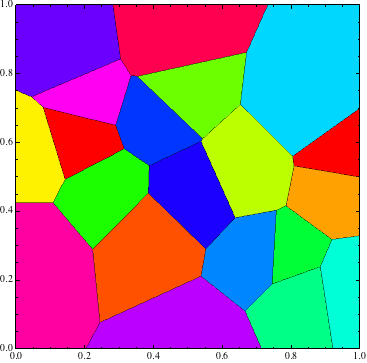Anyone know if there is any package where I can create Additively Weighted Voronoi Tessellation?
I found this code for R
here. I know I can run R in MMA, but it's not what I need.
Here is how I create the Non Weighted Tessellation.
pts=MapIndexed[Flatten[{##}]&,RandomReal[{0,1},{20,2}]];
g1=ListDensityPlot[pts
,ColorFunction->Hue
,InterpolationOrder->0
,ImageSize->500
,PlotRange->{{0,1},{0,1}}
,Mesh->All
]
